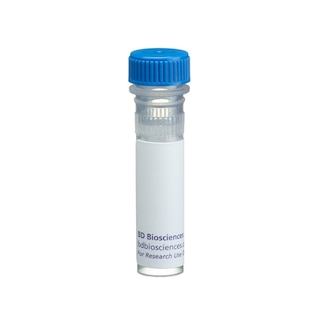-
Reagents
- Flow Cytometry Reagents
-
Western Blotting and Molecular Reagents
- Immunoassay Reagents
-
Single-Cell Multiomics Reagents
- BD® OMICS-Guard Sample Preservation Buffer
- BD® AbSeq Assay
- BD® OMICS-One Immune Profiler Protein Panel
- BD® Single-Cell Multiplexing Kit
- BD Rhapsody™ ATAC-Seq Assays
- BD Rhapsody™ Whole Transcriptome Analysis (WTA) Amplification Kit
- BD Rhapsody™ TCR/BCR Next Multiomic Assays
- BD Rhapsody™ Targeted mRNA Kits
- BD Rhapsody™ Accessory Kits
-
Functional Assays
-
Microscopy and Imaging Reagents
-
Cell Preparation and Separation Reagents
-
- BD® OMICS-Guard Sample Preservation Buffer
- BD® AbSeq Assay
- BD® OMICS-One Immune Profiler Protein Panel
- BD® Single-Cell Multiplexing Kit
- BD Rhapsody™ ATAC-Seq Assays
- BD Rhapsody™ Whole Transcriptome Analysis (WTA) Amplification Kit
- BD Rhapsody™ TCR/BCR Next Multiomic Assays
- BD Rhapsody™ Targeted mRNA Kits
- BD Rhapsody™ Accessory Kits
- United States (English)
-
Change country/language
Old Browser
This page has been recently translated and is available in French now.
Looks like you're visiting us from {countryName}.
Would you like to stay on the current country site or be switched to your country?




Western blot analysis of Rb (pS807/pS811) in human embryonic skin cells. Lysates from serum-starvedl (left panel) and fetal bovine serum-stimulated (right panel) WS1 cell line were probed with purified mouse anti-Rb (pS807/pS811) monoclonal antibody at concentrations of 0.0313 µg/mL (lanes 1 and 4), 0.0156 µg/mL (lanes 2 and 5), and 0.008 µg/mL (lanes 3 and 6). Rb (pS807/pS811) is identified as a band of 110 kDa in the stimulated cells.


BD Pharmingen™ Purified Mouse anti-Rb (pS807/pS811)

Regulatory Status Legend
Any use of products other than the permitted use without the express written authorization of Becton, Dickinson and Company is strictly prohibited.
Preparation And Storage
Product Notices
- Since applications vary, each investigator should titrate the reagent to obtain optimal results.
- Caution: Sodium azide yields highly toxic hydrazoic acid under acidic conditions. Dilute azide compounds in running water before discarding to avoid accumulation of potentially explosive deposits in plumbing.
- Please refer to www.bdbiosciences.com/us/s/resources for technical protocols.
The retinoblastoma gene product (Rb) is well known as a tumor suppressor and is either absent or mutated in many human tumors. Retrovirus-mediated gene transfer of the wild-type Rb gene into several Rb mutant neoplastic cell lines suppresses their tumorgenicity. Rb is a 110-kDa nuclear phosphoprotein that undergoes differential phosphorylation during the cell cycle. During G1 phase, Rb is predominantly in a hypophosphorylated state. It becomes increasingly phosphorylated throughout the cell cycle until late mitosis, when substantial dephosphorylation occurs. Hypophosphorylated Rb interacts with a number of cellular proteins including the E2F transcription factor, several cyclins, RBP-1, RBP-2, c-Abl, c-myc, N-myc, and p46. Phosphorylation of Rb at various sites, by Cyclin-dependent protein kinases, inhibits the binding of Rb to these proteins. Rb is thought to mediate its effects, in part, via the repression of genes required for proliferation. For example, Rb is specifically recruited to promoters containing E2F sites and actively represses E2F mediated transcription. Rb also stimulates the activity of other transcription factors, although the mechanisms are less clearly defined. Thus, Rb appears to regulate transcription in its aim to control cell growth.
The J112-906 monoclonal antibody recognizes Rb phosphorylated at serines 807 and 811 (pS807/pS811), which regulate c-Abl binding and cell cycle progression. The orthologous phosphorylation sites in mouse and rat Rb are pS800/pS804 and pS778/pS782, respectively.
Development References (3)
-
Cobrinik D. Pocket proteins and cell cycle control. Oncogene. 2005; 24:2796-2809. (Biology).
-
Knudsen ES, Wang JY. Differential regulation of retinoblastoma protein function by specific Cdk phosphorylation sites. J Biol Chem. 1996; 271(14):8313-8320. (Biology).
-
Ren S, Rollins BJ. Cyclin C/Cdk3 promotes Rb-dependent G0 exit. Cell. 2004; 117:239-251. (Biology).
Please refer to Support Documents for Quality Certificates
Global - Refer to manufacturer's instructions for use and related User Manuals and Technical data sheets before using this products as described
Comparisons, where applicable, are made against older BD Technology, manual methods or are general performance claims. Comparisons are not made against non-BD technologies, unless otherwise noted.
For Research Use Only. Not for use in diagnostic or therapeutic procedures.
